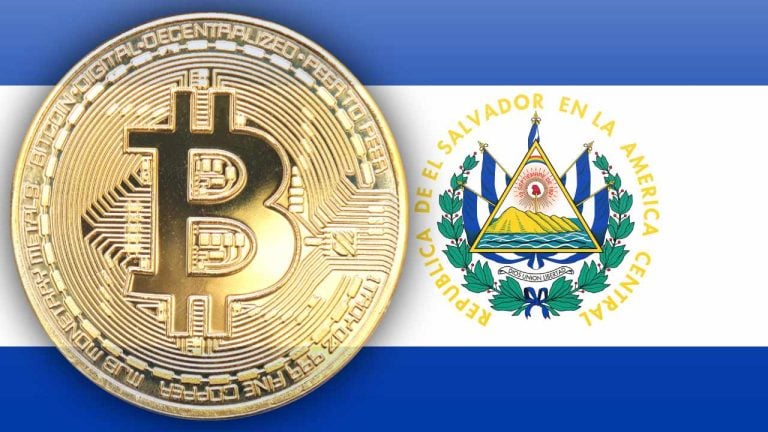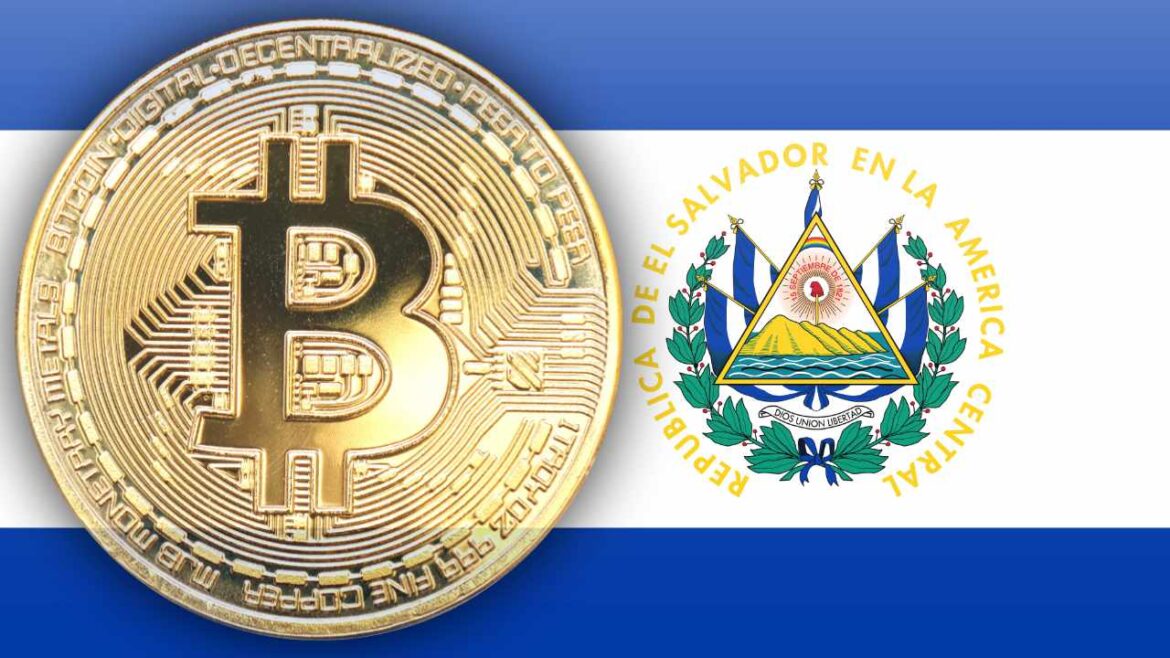 El Salvador has been buying one bitcoin a day since 2022, according to President Nayib Bukele, who confirmed that his country’s “1 bitcoin a day program” will continue until the cryptocurrency “becomes unaffordable with fiat currencies.” The bitcoins acquired from El Salvador’s daily purchases are also deposited into the same wallet address used for the […]
El Salvador has been buying one bitcoin a day since 2022, according to President Nayib Bukele, who confirmed that his country’s “1 bitcoin a day program” will continue until the cryptocurrency “becomes unaffordable with fiat currencies.” The bitcoins acquired from El Salvador’s daily purchases are also deposited into the same wallet address used for the […]
Source link
Fiat
Non-custodial fiat off-ramp now available in crypto wallets via Visa debit
Crypto and NFT payments infrastructure company Transak has partnered with Visa to integrate Visa debit capabilities into its global off-ramp service. This move increases the options for crypto-to-fiat off-ramps, allowing users in over 145 countries to convert their crypto holdings into local fiat currencies.
Using a product called Visa Direct, Transak will allow the fluid conversion of digital assets into fiat currency across the industry. This collaboration addresses a critical gap in the market: the ease of crypto-to-fiat conversion. Historically, the focus has been on facilitating the flow of fiat into crypto, leaving the reverse process, from crypto back to fiat, less developed and often cumbersome.
This has led to a reliance on stablecoins or alternative, less-regulated conversion methods, which could be problematic regarding local compliance. The partnership between Transak and Visa introduces a solution to this challenge, offering real-time card withdrawals through Visa Direct. Yanilsa Gonzalez-Ore, North America Head of Visa Direct, highlighted the significance of this integration, emphasizing its role in providing a more connected and efficient experience for users.
“By enabling real-time card withdrawals through Visa Direct, Transak is delivering a faster, simpler and more connected experience for its users — making it easier to convert crypto balances into fiat, which can be spent at the more than 130M merchant locations where Visa is accepted.”
A key feature of Visa Direct is its real-time transaction processing capability, potentially completing transfers in under 30 minutes—a stark contrast to the often lengthy procedures in traditional banking. Further, most off-ramps today are limited to centralized exchanges, meaning investors are required to undergo at least a momentary move into centralized custody before withdrawing.
The ability to convert crypto to fiat directly from a wallet allows users to retain the self-sovereign aspect of self-custody in crypto. Transak is integrated into more than “350 leading Web3 wallets and games, such as MetaMask, Trust Wallet, Coinbase Wallet, and Ledger.”
Sami Start, CEO of Transak, views this partnership as a pivotal moment for Web3, commenting,
“We believe this partnership is an inflection point for Web3 as a whole. Now, millions across the globe have a straightforward way to cashout their digital asset holdings to their local currency in real-time and intuitively.
They no longer have to walk the treacherous path of compliance uncertainty or face risks of fraud — Transak and Visa have them covered for over 40 cryptocurrencies.”
Testing the wallet-based fiat off-ramp.
However, such a revelation is not without its downside. As of press time, the price of Bitcoin is $43,497. However, withdrawing 0.1 BTC would result in just $4,218 in fiat landing in an investor’s bank account, a 3% haircut on the current value. Transak takes a 1% fee and a nominal processing fee paid to “service providers.” However, an information bubble on the page does indicate that the price listed is an estimate, so it is currently unclear whether there is a spread along with the fee.

The spread between the estimated price and the current market price is around 2% across all assets reviewed. A 2% spread is also shown for the ‘buy’ side trades from Visa Card, ApplePay, GooglePay, Cash App, and bank wire, again with a 0.99% transaction fee.
While the Transak website states a flat 1% fee, the partner docs describe the pricing mechanism in greater detail. The spread is intended to cover network fees and “a small slippage percentage.” Combining fees into a single variable may make such transactions appear more straightforward to non-native crypto users. However, daily users may prefer more finite control over the costs. Ultimately, there is a cost for convenience.
Harshit Gangwar, Marketing Head & Investor Relations Lead at Transak, confirmed to CryptoSlate that the “spread fluctuates based on factors like the complexity of sourcing liquidity and the risks associated with storing different cryptocurrencies.” Specifically, he said,
“[The spread is] variable and determined by our systems and team based on the challenges in storing and sourcing cryptocurrencies.
For example, if a cryptocurrency available for off-ramping suddenly drops significantly, it signals to our team the increased risk of storing it for an extended period, which could affect the spread percentage for that particular cryptocurrency.”
Further, for those hoping that the process would remove the need for KYC steps, this appears not to be the case. Name, address, date of birth, ID, and a selfie are all required when setting up an account for the Transak withdrawal service. Thus, buying or selling through this non-custodial off-ramp will link your personal information to your wallet address.
Those looking for a fully compliant method to buy and sell crypto with fiat without using centralized exchanges now have a method costing between 0.99% and 3%, which may be considerably less than other peer-to-peer options.
Ultimately, the collaboration between Transak and Visa Direct is a decisive step forward in the journey toward the mainstream acceptance of digital currencies. It attempts to simplify converting crypto to fiat and removes barriers of complexity and uncertainty, potentially accelerating crypto adoption among the general populace.
Editor’s Note: I attempted to conduct a transaction to test the process and verify whether there was a 2% spread. I intended to off-ramp $100 worth of MATIC, but this was the screen I was met with after completing the KYC process due to new FCA promotional rules.

Fiat on-ramps, banking partners crucial for institutional Web3 adoption — European Blockchain Convention
Fiat payment rails and neobanking services are becoming a vital cog in driving mainstream adoption and acceptance of the wider cryptocurrency space, according to key industry figures at the intersection of traditional finance and Web3.
Executives from OpenPayd, Ramp Network and Damex unpacked the increasing importance of third-party payment rails and banking platforms in conversation with Cointelegraph during the recent European Blockchain Convention hosted in Barcelona.
OpenPayd CEO Iana Dimitrova outlined how their firm processes over 3 billion euros of monthly transaction volume and has issued over two million accounts, including several prominent cryptocurrency exchanges, including the likes of Crypto.com.

As Dimitrova explained, OpenPayd’s core offering is banking and payments infrastructure for various industries including the cryptocurrency space.
“The reality is that there is a growing level of mistrust on behalf of both regulators as well as traditional holders of access to payment rails, whether that’s SEPA or SWIFT, banks or systems that manage the payment rails insofar as the crypto world is concerned,” Dimitrova said.
The CEO added that fiat on-ramps and payment rails could bridge the gap by addressing concerns around identity and traceability, “ergo money laundering,” which she says remains a perception held by traditional financial institutions and regulators.
Samuel Rondot, the managing director of Damex, unpacked how the Gibraltar-based firm specializes in providing fiat on and off-ramps for “higher risk category clients,” including iGaming, Forex, family offices and hedge funds. The company typically converts large amounts of cryptocurrency to fiat and vice versa in euro, British pounds and United States dollars.
Damex’s clients deal with reputational issues with their bank accounts on an almost daily basis because they want to interact with the cryptocurrency ecosystem. Pondering why banks remain “allergic to crypto,” Rondot suggests that the problem comes from a misunderstanding “of the tool and the principle.”
Related: Crypto payment solution Ramp expands on-ramp service, adds support for 40 fiat currencies
This has led to the creation of services like OpenPayd and Ramp, which are beginning to fill the role of specialist actors that understand and facilitate Anti-Money Laundering and Know Your Customer processes and act as a third party, “shielding” traditional banks from directly dealing with cryptocurrency-related businesses.
“Let’s say you do a crypto-to-fiat payment with an OpenPayd IBAN. You then move this money toward your main bank account. It’s a completely different process, and the bank will not have a problem with that,” Rondot said.
The Damex exec highlighted the importance of these services in carrying out the necessary due diligence, mixed with the willingness to do business with crypto-related businesses, to allow fiat to flow between traditional finance and decentralized finance ecosystems.
Szymon Sypniewicz, the co-founder and CEO of Ramp Network, outlined how its services offer a single application programming interface (API) platform to the global fiat system. Ramp’s API and software development kit provide access to a regulatory-compliant tech setup that allows users to buy and sell cryptocurrencies worldwide.
As Sypniewicz explains, Ramp’s infrastructure allows crypto-related businesses to offer credit cards, debit cards, local payment methods and bank transfer functionality for users to acquire cryptocurrencies or pay for services:
“The aim here is to make the transition to crypto-enabled products so smooth and seamless that people would stop noticing that they are now interacting with an entirely new tech setup.”
When asked how difficult it is for crypto-native businesses to open bank accounts or access payment rails, all three highlight the gap between emerging and existing financial technologies as a continual pain point.
“I guess one of the main challenges that we see is that the banking technology of incumbent banks does not really correspond to the level of innovation, speed and agility that all of their products and customers require,” Dimitrova said.
She adds that is a prominent reason why infrastructure providers that can aggregate different payment rails, different banks and different channels exist.
“We can go to Szymon and give him a single API and allow him to get access to multiple countries, multiple jurisdictions, multiple currencies and have an equivalent level of service and experience across the board.”
Sypniewicz adds that the difficulty of crypto-firms getting banked comes down to how specialized they are. Platforms like Ramp effectively act as “regulatory technology specialists,” aggregating dozens of global banking and payment provider partners.
“All the regulations that you need to specialize in to be able to meet the requirements are fundamentally met by us. The end-user is able to take their crypto, and interact with your platform, wallet, NFT marketplace, or new-generation DeFi products.“
Compliance standards are another prerequisite for wider adoption and acceptance of crypto-native businesses. Sypniewicz, Dimitrova and Rondot agreed that the European Union’s Markets in Crypto-Assets (MiCA) framework will provide a common framework for Web3 and TradFi players to operate more easily.
Magazine: Slumdog billionaire: Incredible rags-to-riches tale of Polygon’s Sandeep Nailwal
Bitcoin ETF Approval Anticipated To Trigger Fiat Influx Of $24-50 Billion
In a recent report released by Matrixport, a digital assets financial services platform, the spotlight shifts beyond Bitcoin (BTC) as the eagerly anticipated approval of a Bitcoin spot Exchange-Traded Fund (ETF) by the US Securities and Exchange Commission (SEC) could have far-reaching effects.
According to the analysis, not only could the Bitcoin market experience a significant boost, but Tether (USDT) and the broader crypto market could also see positive outcomes.
Potential Impact On Bitcoin
Matrixport’s foresight, outlined in their 2023 outlook report published on December 9, 2022, projected a substantial crypto rally driven by factors such as lower US inflation and favorable macroeconomic conditions.

This projection anticipated strong rebounds for Bitcoin and Ethereum (ETH), along with a notable decrease in volatility.
Surrounding the approval of these pending applications, a standout performer in the market has been Grayscale Investments’ Bitcoin Trust (GBTC), with its share prices surging by an impressive 167% year-to-date, outpacing Bitcoin’s 71% growth.
While GBTC’s net-asset-value (NAV) discount marginally narrowed from -45% to -43% at the beginning of the year, the game-changing moment arrived when BlackRock announced its ETF application on June 15, 2023.
Matrixport’s earlier reports analyzed the US registered investor advisor (RIA) community, comprising approximately 15,000 advisors overseeing around $5 trillion.
Recognizing the potential of this group, the report suggests that even a modest 1% allocation recommendation for Bitcoin would result in approximately $50 billion in inflows.
$56,000 BTC Price Projection
Drawing a parallel with precious metals ETFs boasting an estimated $120 billion in market capitalization, and assuming that between 10-20% of precious metal ETF investors explore a Bitcoin ETF as a diversification tactic against monetary debasement and inflation hedges, the potential influx into the Bitcoin ETF could reach a significant $12-24 billion.
The report speculates on the implications for Tether’s market capitalization by looking at the potential impact of BlackRock’s Bitcoin ETF approval.
Acting as a proxy for potential ETF inflows, a $24 billion increase in Tether’s market cap could conservatively push Bitcoin’s price to $42,000. With an even larger influx of $50 billion resulting from a 1% allocation by RIAs, Bitcoin could rally to $56,000.
Overall, Matrixport’s analysis sheds light on the potential ripple effects of Bitcoin ETF approval, extending beyond Bitcoin’s immediate market and encompassing Tether and the wider cryptocurrency landscape.
As market participants eagerly await regulatory decisions, the industry remains poised for potential growth and transformation.
As of the time of writing, the leading cryptocurrency in the market, Bitcoin (BTC), is trading at $28,700, reflecting a 1.8% increase over the past 24 hours.
It is worth noting that BTC has successfully maintained the gains it has made since mid-September. During this period, the cryptocurrency broke its short-term downtrend structure after reaching its peak for the year at $31,800 on July 13.
Featured image from Shutterstock, chart from TradingView.com




